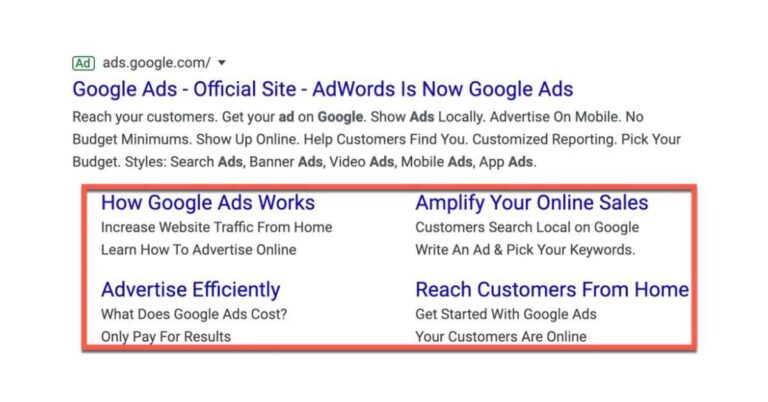Boost Your Rankings with Proven SEO External Link Strategy
In the ever-evolving landscape of digital marketing, a well-planned SEO external link strategy can be the competitive edge your website needs. As we plunge into the world of Search Engine Optimization, it’s crucial to understand the vast array of tactics at our disposal. One such critical factor that can significantly contribute to your site’s SEO health is external links.
An SEO external link strategy involves integrating links from other websites into your content. It sounds simple, but there’s a science behind it. When used effectively, external links can be a powerful tool to enhance your website’s authority, improving its visibility and reputation. This introduction sheds some light on the significance of external link strategies in SEO and how they can help improve your website’s authority.
Understanding SEO External Link Strategy
An SEO external link strategy refers to gaining hyperlinks from other websites to your own. These links serve as navigation pathways that help users and search engines journey through the vast data of the internet. But aside from connecting the billions of web pages, they carry significant weight in SEO and significantly contribute to your website’s visibility and ranking performance.
Internal vs. External Links: Know the Difference
Differentiating between internal and external links is vital for an effective SEO external link strategy. While both types are crucial for SEO, they serve different purposes.
Internal links refer to hyperlinks that direct users to other pages within the same website domain. They help users navigate, enhance user experience, and allow search engines such as Google to discover and index all pages on your site.
External links, or backlinks, originate from other websites and point back to your site. These links signal the quality and relevance of your content to search engines, as they are seen as a “vote of confidence” from other websites.
Impact on Search Engine Ranking Algorithms
By now, it’s perhaps clear that an SEO external link strategy plays a significant role in optimizing your website’s search engine ranking algorithms. Simply put, the more high-quality external links that return to your website, the better your chances of ranking higher.
Google views these links as endorsements, indicating your website offers valuable content. They are akin to positive reviews in the digital world. Therefore, they increase your website’s authority and trustworthiness, improving your search engine visibility and ranking potential.
Understanding the dynamics of an SEO external link strategy is not just about gaining links but obtaining quality and relevant ones. Ensuring that your website is equipped with a robust link strategy can make all the difference in the cutthroat world of online visibility.

Benefits of a Strong External Link Strategy
An effective SEO external link strategy can be the linchpin for success in today’s fast-paced digital world. Harnessing the power of external links brings many advantages to your website. Let’s dive into some key benefits you can expect from implementing a robust SEO external link strategy.
Improved Website Authority and Credibility
One of the primary goals of an SEO external link strategy is to establish and enhance your website’s authority and credibility in its niche. High-quality, relevant external links pointing to your site demonstrate to search engines that others endorse your content—signifying that your website is valuable, reliable, and trustworthy. The more credible backlinks you earn, your website’s “online reputation” improves, ultimately elevating your authority in the digital space.
Positive Impact on Organic Search Rankings
An effective SEO external link strategy goes a long way in boosting organic search rankings. Search engines like Google use algorithms that rely on several ranking factors, including external links, to determine the order in which websites appear on the results page. When your website consistently gains high-quality backlinks, it’s perceived as more relevant, informative, and authoritative, influencing search engines to rank it higher in SERPs (Search Engine Results Pages). This improvement in organic search rankings directly contributes to higher traffic and, potentially, increased conversions.
Enhancing User Experience Through Relevant External Content
Another primary benefit of a well-executed SEO external link strategy is enhancing user experience. By linking to relevant, high-quality external content, you provide additional information, complementary resources, or further research opportunities for your audience. This supplementary information helps your users deepen their understanding of the subject at hand, making your website a valuable and reliable source of information.
A robust SEO external link strategy uplifts your website’s authority and search rankings and creates a rich and informative user experience that keeps your audience coming back for more.
Critical Components of an Effective External Link Strategy
Designing and executing an effective SEO external link strategy involves several critical components. To truly reap the benefits that external linking has to offer, it’s essential to focus on these vital areas:
Identifying High-Quality External Sources
For optimizing your SEO external link strategy, it’s crucial to identify and secure backlinks from high-quality sources. But how do you define a ‘high-quality’ source? It typically implies websites with high domain authority, top-notch content, and a positive reputation in your industry or niche. Getting your website linked by these sources improves your SEO and helps you gain referrals and credibility.
Anchor Text Optimization for SEO
The anchor text refers to the clickable text that appears in a hyperlink. It is typically underlined and appears in a different color from the surrounding text. Anchor text helps search engines like Google categorize and rank your page. For an effective strategy, diversify your anchor text—using exact-match keywords, partial-match keywords, branded terms, and generic phrases—while keeping them relevant, helpful, and natural to your content.
Utilizing Do-Follow and No-Follow Links Strategically
The strategic use of do-follow and no-follow links can significantly bolster your SEO external link strategy.
Do-follow links pass on SEO juice and contribute to the linked site’s ranking in the search engine index. They provide a solid signal to search engines about your links’ quality and relevance.
On the other hand, no-follow links do not pass SEO juice, but they can still contribute to a natural backlink profile and even drive organic traffic to your site.
Balancing both links can lend authenticity and diversity to your link profile, thus avoiding any suspicious patterns that search engines may penalize. Each component can significantly make your external link strategy more potent and effective.

Best Practices for Implementing SEO External Link Strategy
Implementing an effective SEO external link strategy can be a game-changer for your website’s performance. Ensuring you’re utilizing best practices is crucial to get the most out of your efforts. Here are some essential best practices that can help you optimize your SEO external link strategy.
Conducting Thorough Link Audits
A crucial initial phase in devising a competent SEO external link strategy is undertaking a thorough link audit. This process involves analyzing your website’s existing external link profile and assessing the value and potential risk each link brings to your SEO. By doing this, you can identify areas of improvement, spot potentially harmful links, and devise a future strategy based on your findings.
Building Natural and Diverse Link Profiles
Excellent strategies are built on natural and diverse link profiles. ‘Natural’ means your backlinks should appear organic, not paid or artificially placed. ‘Diverse’ references the variety within your link profile—in terms of source domains, types of pages linked to, and anchor texts used. Aim for links from various high-quality, authoritative sources in your industry to build strength and resilience in your SEO strategy.
Stay On Top of the Latest Industry Trends and Algorithm Changes
The world of SEO is constantly evolving. Staying on top of industry trends and adjusting to algorithm changes is crucial to implementing an effective SEO external link strategy. Search engines like Google continuously update their algorithms, impacting how they analyze and rank websites. You can quickly adapt your strategy and maintain your website’s competitive edge by staying informed.
Common Mistakes to Avoid in SEO External Link Strategy
Implementing an effective SEO external link strategy is free of pitfalls. Some common mistakes can hinder your SEO performance and even lead to penalties from Google. Understanding these errors can avoid unforeseen issues and ensure fruitful link-building efforts.
Over-optimization and its Consequences
While optimization is a cornerstone of an SEO external link strategy, overdoing it can lead to negative consequences. For instance, overuse of exact match anchor text can make your link profile seem unnatural and potentially lead to penalties from search engines. The key is to maintain a well-rounded and varied link profile, balancing branded, non-branded, generic, and keyword-focused anchor texts.
Linking to Low-Quality or Irrelevant Websites
One of the most common blunders in SEO external link strategy is acquiring backlinks from low-quality or irrelevant websites. While it could be tempting to gain many backlinks quickly, the quality and relevance of these links are paramount. Google and other search engines could penalize websites with backlinks from spammy, irrelevant, or low-quality sources, leading to a drop in ranking or even removal from the search index.
Ignoring the Importance of Internal Linking
While external linking garners much attention, ignoring the importance of internal linking can be costly. Proper internal linking boosts the visibility of your deeper pages, enhances the user experience, and spreads link equity throughout your website. Internal links on your website help Google understand the context and relationship between pages and posts, contributing to your SEO efforts.
Tools and Resources for Implementing SEO External Link Strategy
Establishing an effective SEO external link strategy requires sharp insights and timely information. Fortunately, there are several tools and online resources available that can significantly simplify this process.
Recommended Tools for Link Analysis and Monitoring
Several tools in the market can assist in implementing a successful external link strategy. These tools offer various services, such as link analysis, backlink tracking, and competitor analysis. Here are a few recommended ones:
Ahrefs: A leading SEO backlink checker tool, it allows you to check your website’s backlinks, analyze their value, and even spy on your competitors’ backlinks.
SEMrush: This all-in-one tool provides comprehensive SEO analysis, including tracking your backlinks, auditing your website for SEO issues, providing insights on keyword rankings, and offering competitor analysis.
Moz Pro: This includes the Link Explorer that delivers insights on your link profile, analyzing your links’ quality and quantity.
Useful Online Resources for Staying Informed About SEO Trends
It is essential to stay up-to-date with the latest trends and changes. The following online resources can help you keep your SEO External Link Strategy aligned with the industry:
Google Webmaster Central Blog: Google’s blog is the first source to learn about the latest updates, releases, or changes in Google’s search algorithms.
Search Engine Journal: A reputable platform offering the latest news, industry trends, and tips in the world of SEO.
Moz Blog: Moz Blog is a well-known resource providing in-depth articles, studies, and guides about various aspects of SEO.
Leveraging these tools and resources can elevate your SEO External Link Strategy, keeping it dynamic, efficient, and up-to-date with the ongoing trends in SEO.
Frequently Asked Questions about SEO and SEO Strategies
What is an SEO external link strategy?
An SEO external link strategy is a method used to boost a website’s visibility and ranking on search engines by acquiring high-quality backlinks. The strategy involves getting other reputable websites to link back to your site.
Why is an SEO external link strategy important?
An SEO external link strategy is important because it influences how search engines perceive the value and relevance of your website, thereby affecting your search engine rankings. A website with high-quality external links is often viewed as a credible resource.
What are common mistakes to avoid in an SEO external link strategy?
Common mistakes to avoid include:
1. Over-optimization of anchor texts.
2. Acquiring backlinks from low-quality or irrelevant websites.
3. Refrain from neglecting the importance of internal linking.
What is link analysis in SEO?
Link analysis is part of SEO, where you evaluate the links pointing to and from your website. It helps in understanding your website’s link profile, identifying areas of improvement, and finding competitive link opportunities.
What is over-optimization in SEO?
Over-optimization in SEO means excessively optimizing a web page or website to a point where it could lead to penalties by search engines. This could include keyword stuffing, overuse of exact-match anchor text, and excessive use of internal or external links.
How can you avoid over-optimization?
You can avoid over-optimization by not abusing keywords or SEO strategies. Avoid keyword stuffing, ensure the usage of various anchor texts, and keep a balanced ratio of internal and external links.
What makes a high-quality link in SEO?
A high-quality link in SEO typically originates from a reputable authority website relevant to your website/industry. These links have relevant, keyword-inclusive anchor text and preferably are from a page with a relatively small number of other outgoing links.
How do you monitor backlinks in an SEO external link strategy?
Use tools like SEMrush, Ahrefs, and Moz’s Link Explorer to monitor your website’s backlink profile. These tools can help you analyze your backlinks’ strength, relevance, and health.
Why is internal linking important in an SEO strategy?
Internal linking is crucial as it helps improve site navigation, define the website’s architecture and hierarchy, distribute page authority, and enhance user experience.
Where can I stay updated about SEO trends for better external link strategies?
To stay updated about SEO trends, consider visiting sites like Moz Blog, Search Engine Journal, and Google’s Webmaster Central Blog. They provide the latest in SEO news, updates, and practical strategies.
Conclusion
Navigating the realms of an SEO External Link Strategy can be an intricate journey. Throughout this blog post, we’ve unraveled the critical aspects of such a strategy, the common mistakes to avoid, and the essential tools and resources to assist you.
An effective SEO External Link Strategy is not about the sheer quantity of backlinks but the quality, relevance, and diversity of these links, all contributing to your website’s SEO strength. We encourage you to implement the strategies in this blog post to accentuate your website’s visibility and ranking. A robust SEO External Link Strategy can pay off substantially in terms of organic traffic, leading to greater engagement and potentially increased revenues.
In your journey toward a successful SEO strategy, remember to stay curious, adapt to new trends, learn from your mistakes, and use every internal or external link to shape your online presence into a stronger, more authoritative entity. With dedication and consistency, you can get your SEO strategy to ensure your website stands out in the virtual crowd, drawing in your target audience like never before.





